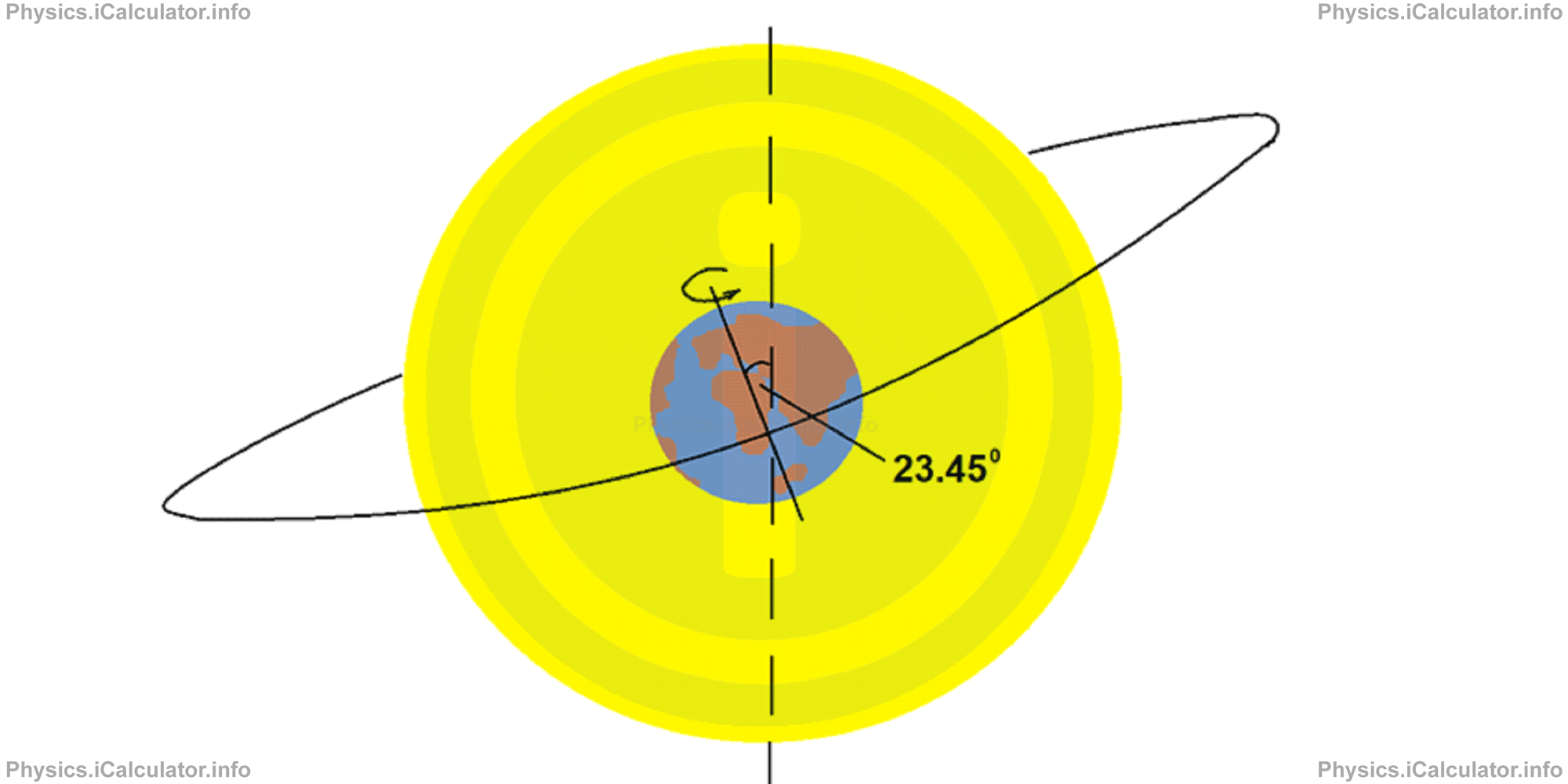Menu
Physics Lesson 22.2.7 - Planetary Rotation around Own Axis
Please provide a rating, it takes seconds and helps us to keep this resource free for all to use
Welcome to our Physics lesson on Planetary Rotation around Own Axis, this is the seventh lesson of our suite of physics lessons covering the topic of Sun and Planetary Motion, you can find links to the other lessons within this tutorial and access additional physics learning resources below this lesson.
Planetary Rotation around Own Axis
In addition to orbital motion (revolution) around the Sun, planets rotate around themselves as well. This rotation occurs according an axis passing through the centre of planet, known as planetary axis. This self-rotation derives from the fact that planets are objects with large dimensions; they are not merely material points as assumed in Kepler's Laws.
Planetary axis forms a certain angle to the Solar System axis (they are not parallel). The last column of planets table in the previous tutorial gives the values in degree of this inclination angle for all planets of our Solar System. Thus, for Mercury the angle is 0°. This means Mercury equator plane is in the same direction to the plane of its orbit around the Sun. on the other hand, Earth has an inclination of 23.45°. (Recall the deflection of Earth geographic poles in respect to the corresponding magnetic poles explained in Section 16, which is exactly 23.45°. This is because magnets point towards north-south direction of our galaxy). The figure below that gives a view taken from behind the Earth clarifies this point. The dashed line represents the North-South direction of our galaxy.

From the aforementioned table we have the following values for the angle of inclination: Mercury 0°, Venus 177.3°, Earth 23.45°, Mars 25.19°, Jupiter 3.12°, Saturn 26.73°, Uranus 97.86° and Neptune 120°. Planets that have an angle less than 90° rotate in the same direction while those with angle of inclination greater than 90° rotate in the same direction with each other but in opposite direction to planets with inclination angle less than 90°.
The period of self-rotation is known as a "day" in popular terminology. The longest day is that of Mercury (which is more than 253 Earth days) and the shortest one is that of Jupiter (less than 10 hours).
You have reached the end of Physics lesson 22.2.7 Planetary Rotation around Own Axis. There are 10 lessons in this physics tutorial covering Sun and Planetary Motion, you can access all the lessons from this tutorial below.
More Sun and Planetary Motion Lessons and Learning Resources
Whats next?
Enjoy the "Planetary Rotation around Own Axis" physics lesson? People who liked the "Sun and Planetary Motion lesson found the following resources useful:
- Rotation Feedback. Helps other - Leave a rating for this rotation (see below)
- Cosmology Physics tutorial: Sun and Planetary Motion. Read the Sun and Planetary Motion physics tutorial and build your physics knowledge of Cosmology
- Cosmology Revision Notes: Sun and Planetary Motion. Print the notes so you can revise the key points covered in the physics tutorial for Sun and Planetary Motion
- Cosmology Practice Questions: Sun and Planetary Motion. Test and improve your knowledge of Sun and Planetary Motion with example questins and answers
- Check your calculations for Cosmology questions with our excellent Cosmology calculators which contain full equations and calculations clearly displayed line by line. See the Cosmology Calculators by iCalculator™ below.
- Continuing learning cosmology - read our next physics tutorial: The Moon's Movement. Eclipses. Calendars
Help others Learning Physics just like you
Please provide a rating, it takes seconds and helps us to keep this resource free for all to use
We hope you found this Physics lesson "Sun and Planetary Motion" useful. If you did it would be great if you could spare the time to rate this physics lesson (simply click on the number of stars that match your assessment of this physics learning aide) and/or share on social media, this helps us identify popular tutorials and calculators and expand our free learning resources to support our users around the world have free access to expand their knowledge of physics and other disciplines.